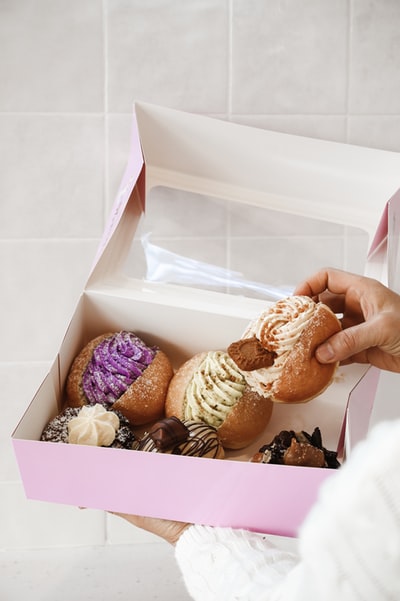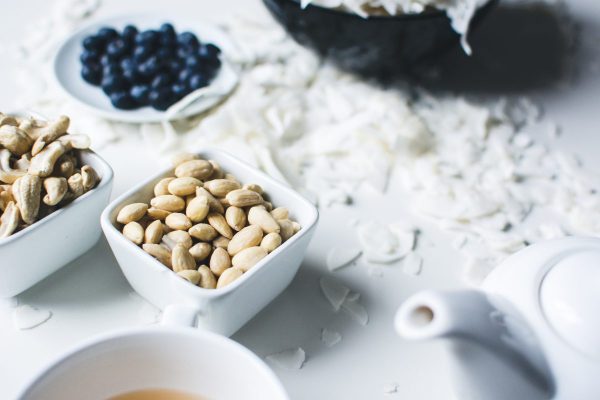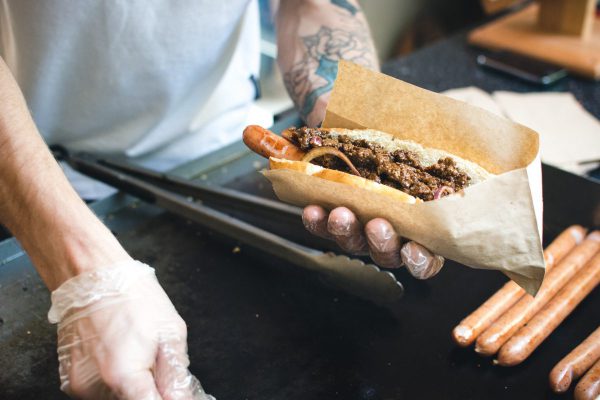Ingredients
- 2 packets dry yeast (active)
- 2 eggs
- 525 gr sifted all-purpose flour
- 425 gr butter
- 180 ml milk (cold)
- 120 ml warm water (very)
- 65 gr sugar
- 3 gr salt
- some flour for work surface
Carefully read TIPS FOR THE BAKER at bottom of recipe before proceeding.
1. Sprinkle yeast into very warm water in a 1 cup measuring cup. ("Very warm" water should feel comfortably warm when dropped on wrist.) Stir in half teaspoon of the sugar. Stir until yeast dissolves. Let stand, undisturbed until bubbly and double in volume, about 10 minutes. Now you can tell the yeast is working.
2. Combine remaining sugar, milk, eggs, 3 cups of the flour, salt, and the yeast mixture in a large bowl. Beat with electric mixer at medium speed, for 3 minutes (or beat with spoon for 3 minutes). Beat in remaining flour with a wooden spoon until dough is shiny and elastic (dough capable electric mixer is fine, this is an old recipe!). Dough will be soft. Scrape down sides of bowl. Cover with plastic wrap. refrigerate 30 minutes.
3. Place the sticks of butter 3 cm apart, between two sheets of waxed paper; roll out to a 30 cm square. Chill on cookie sheet until ready to use.
4. Sprinkle working surface heavily with flour, about one third cup; turn dough out onto flour; sprinkle flour on top of dough. Roll out to an 46 cm x 33 cm rectangle. Brush off excess flour with a soft pastry brush.
5. Peel off top sheet of wax paper from butter; place butter paper side up on one end of dough to cover two third of the dough; peel off remaining sheet of waxed paper. For easy folding, carefully score butter lengthwise down the center, without cutting into the dough. Fold the third of dough which is not covered with butter over the middle third of the dough to enclose the butter completely. Turn dough clockwise so the open side is away from you.
6. *Roll out to a 61 cm x 30 cm rectangle using enough flour to keep dough from sticking. Fold both side ends in to meet in the center of the dough (creating a folded edge at both sides of dough). Fold in half to bring the two folded edges together and create four layers of dough. Turn again so the open side is away from you.
* Repeat rolling and folding this way two more times. Keep the dough to a perfect rectangle by rolling straight up and down and from side to side. When it is necessary, chill the dough between rollings. Clean off the working surface each time and dust lightly with flour. Refrigerate dough 1 hour or more (even overnight, if you wish) to relax dough and firm up butter layers). Cut dough in half. You can see the buttery layers, which when baked become flaky and crisp. Work with only half the dough at a time. Keep the other half covered and refrigerated until ready to use.
At this point use dough to make pastries like Cheese Danish, Almond Crescents etc. See individual recipes.
TIPS FOR THE BAKER
It is important to keep butter enclosed in dough. If it oozes out, immediately sprinkle with flour and if dough becomes too sticky to handle it is probably because the butter has softened. Just chill 30 minutes before continuing rolling and folding.
Use more flour than you would normally use for rolling out pastries, then brush off excess with a soft pastry brush before folding or filling; this way flour will not build up in the pastry.
Since the dough is very rich, it is best to let pastries rise at room temperature . Do not try to hasten the rise by using heat; doing so would melt the butter. This would ruin the texture of the pastry.
If using margarine (NOT recommended because of changes in the water content in recent years) which is of a softer consistency than butter, refrigerate 20 minutes between each rolling.
For freezing: Place shapes pastries on cookie sheets. Don't brush with egg or sprinkle with toppings until ready to bake. Cover with foil or plastic wrap and freeze.
To Bake from frozen state: Remove Danish from freezer the night before and place in refrigerator. Next morning, arrange on cookie sheets, 5 cm apart. Let rise at room temperature, away from drafts until double in volume, about 1.5 hours. Brush with egg wash, sprinkle with toppings; bake following individual recipes.
For refrigerating: Place shaped Danish on cooky sheets; cover; refrigerate. To bake simply remove from refrigerator, let rise and bake as above.


